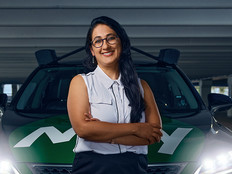Vehicle-to-Vehicle Technology Drives Ahead
Someday in the not-so-distant future, cars traveling on state and local roadways will communicate with one another about lane changes or blind intersections to prevent crashes.
Based on the success of a pilot project in Ann Arbor, Mich., the U.S. Department of Transportation’s (DOT) National Highway Traffic Safety Administration earlier this year announced that it will take steps to enable vehicle-to-vehicle (V2V) communications to prevent collisions.
“Vehicle-to-vehicle technology represents the next generation of auto safety improvements, building on the life-saving achievements we've already seen with safety belts and air bags,” says U.S. Transportation Secretary Anthony Foxx. “By helping drivers avoid crashes, this technology will play a key role in improving the way people get where they need to go while ensuring that the U.S. remains the leader in the global automotive industry.”
In the Ann Arbor test, conducted by the U.S. DOT, the University of Michigan Transportation Research Institute and the Michigan Department of Transportation, and the DOT, 3,000 cars, trucks and buses were equipped with V2V communications.
The technology informs drivers of changing road conditions and potential dangers in order to prevent accidents. What’s more, the wireless systems are networked with traffic-management systems. For example, if an agency learns that brakes have been applied several times in the same spot, a road crew could be dispatched to treat the pavement. And if a crash is detected, drivers can be diverted to alternate routes.
For a glimpse of the initiative, check out the Michigan Department of Transportation video.









